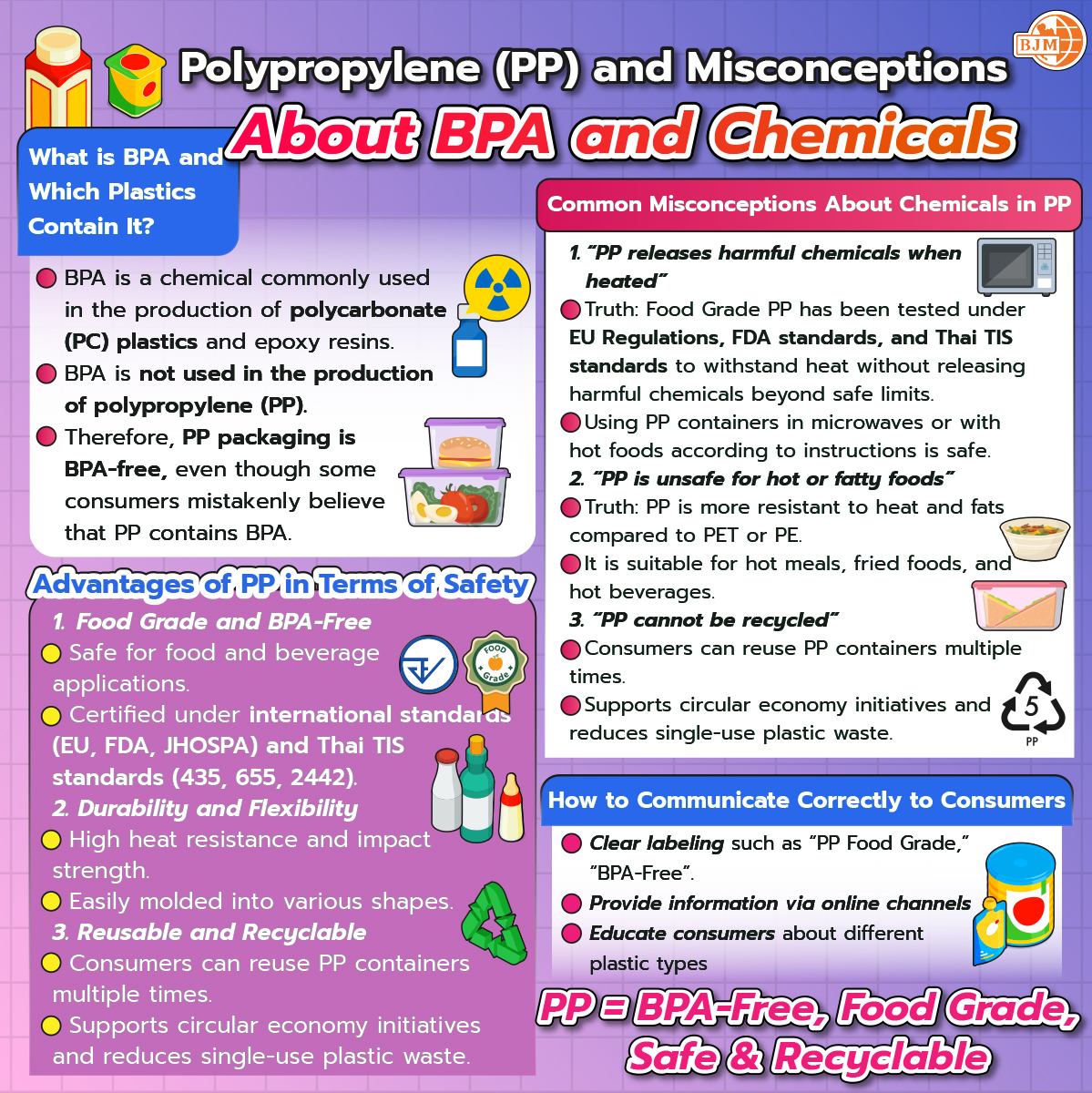Polypropylene (PP) is one of the most widely used plastics for food, beverage, and consumer goods packaging. It is valued for its key properties such as being lightweight, heat-resistant, and recyclable, making it a popular choice for Food Contact Materials (FCMs) . However, there are several misconceptions regarding BPA (Bisphenol A) and other chemicals that may cause unnecessary concern among consumers.
What is BPA and Which Plastics Contain It?
- BPA is a chemical commonly used in the production of polycarbonate (PC) plastics and epoxy resins.
- BPA is not used in the production of polypropylene (PP).
- Therefore, PP packaging is BPA-free, even though some consumers mistakenly believe that PP contains BPA.
Common Misconceptions About Chemicals in PP
-
1. “PP releases harmful chemicals when heated”
- Truth: Food Grade PP has been tested under EU Regulations, FDA standards, and Thai TIS standards to withstand heat without releasing harmful chemicals beyond safe limits.
- Using PP containers in microwaves or with hot foods according to instructions is safe.
-
2. “PP is unsafe for hot or fatty foods”
- Truth: PP is more resistant to heat and fats compared to PET or PE.
- It is suitable for hot meals, fried foods, and hot beverages.
-
3. “PP cannot be recycled”
- Truth: PP is Plastic #5 and can be recycled if properly sorted and processed.
Advantages of PP in Terms of Safety
-
1. Food Grade and BPA-Free
- Safe for food and beverage applications.
- Certified under international standards (EU, FDA, JHOSPA) and Thai TIS standards (435, 655, 2442).
-
2. Durability and Flexibility
- High heat resistance and impact strength.
- Easily molded into various shapes to meet diverse packaging requirements.
-
3. Reusable and Recyclable
- Consumers can reuse PP containers multiple times.
- Supports circular economy initiatives and reduces single-use plastic waste.
How to Communicate Correctly to Consumers
- Clear labeling such as “PP Food Grade,” “BPA-Free,” and “Microwave Safe.”
- Provide information via online channels or QR codes to build trust.
- Educate consumers about different plastic types and clarify distinctions between PP, PC, and PET.
Conclusion
Polypropylene (PP) is a safe and reliable plastic for food and beverage packaging. Misconceptions about BPA and other chemicals can create unnecessary concern, but proper education and transparent communication can reassure consumers. PP = BPA-Free, Food Grade, Safe & Recyclable



